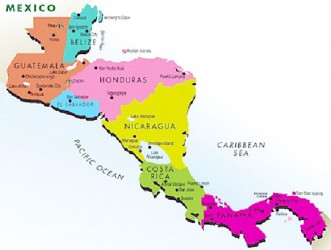Just when we were beginning to digest the news that Nicaragua had signed a contract with a Chinese company to build a $40 billion inter-oceanic canal that would compete with a soon-to-be expanded Panama Canal, Guatemala announced this week that it’s jumping into the fray and will build a $12 billion inter-oceanic “dry corridor.”
Are the Nicaraguan and Guatemalan projects serious? And if they are, do they make sense?
Earlier this week, shortly after Nicaraguan President Daniel Ortega signed a controversial, 50-year concession that would allow Chinese business magnate Wang Jing to build an inter-oceanic waterway in Nicaragua, Guatemala’s privately-held Inter-Oceanic Corridor Board announced that it had concluded feasibility studies and will start construction on the Guatemalan corridor in April 2014.

After reading the latest news, I called Francisco Villagrán, Guate-mala’s ambassador in Washington, to ask him whether the Guatemalan government is supporting the project.
“Yes,’’ he said. “Guatemala wants to promote this project, and to help make it viable. It’s in the interest of the government, of the various municipal governments, and of the communities of the areas that the corridor would pass to make this work.”
If the Guatemalan and Nicara-guan projects materialize, they would compete with the Panama Canal, allowing the shipment of goods from the United States and Latin America to Asia, and vice-versa.

But does it make sense to build three inter-oceanic corridors in Central America? That’s the question I asked Alberto Alemán, the former head of the Panama Canal Authority and the man who successfully ran that waterway from 1996 to 2012.
Alemán doesn’t think so. Among other things, he said, it would be much more expensive to transport goods between the two oceans through Guatemala and Nicaragua than through Panama.
While the Panama Canal is only 50 miles long, and Panama already has a trans-oceanic highway and railroad, the Guatemala corridor would be 232 miles long, and the canal in Nicaragua would be 181 miles long, he said.
“If Guatemala is thinking of competing with the Panama Canal, it’s not a viable project,” Alemán said, adding that the same goes for the Nicaraguan project, and for similar projects that Honduras and El Salvador are contemplating.
“To unload cargo from ships on one coast of Guatemala and reload it on to ships on the other coast would be incredibly expensive,” he said. “Just to unload a container from a ship to the dockyard is more expensive than moving it across the Panama Canal.”
Guatemala says the Panama Canal will soon be too small to accommodate growing cross-oceanic trade. But the Panama Canal is undergoing a US$5 billion expansion that will double its capacity by mid-2015.
Alemán said, however, that the Guatemala project and others could make sense if they are built to transport goods from the countryside to the ports. Central American countries have one of the most outdated infrastructure systems in the world, he said.
A knowledgeable expert with an international organization, who asked not to be identified because he works with several Central Ameri-can governments, agreed that Guate-mala, Nicaragua, and other countries will have a hard time competing with Panama. The Panama Canal will most likely be cheaper and safer than the others, he said.
“Shippers not only look at costs, but also at certainty. They want to make sure that their goods don’t get lost, and that they arrive quickly and safely,” he said. “That’s hard when you have to make several transfers of containers from ships to trucks.”
My opinion: I agree. While Guatemala and Nicaragua would do well in building major transportation corridors, trying to duplicate — or rather, triplicate — international inter-oceanic routes, such as the Panama Canal, may be a monumental waste of money in a region that is already one of the world’s poorest.
Instead of competing with one another, Central American countries should sign effective free-trade agreements, or implement existing ones.
It’s already insane for Central America’s small nations to have individual central banks, separate currencies, and customs barriers that make their trucks wait for days on their respective borders. Instead of spending billions in inter-oceanic corridors, they should build infrastructure projects that complement one another and share their use among themselves.
© The Miami Herald, 2013. Distributed by Knight Ridder/ Tribune Media Services.





